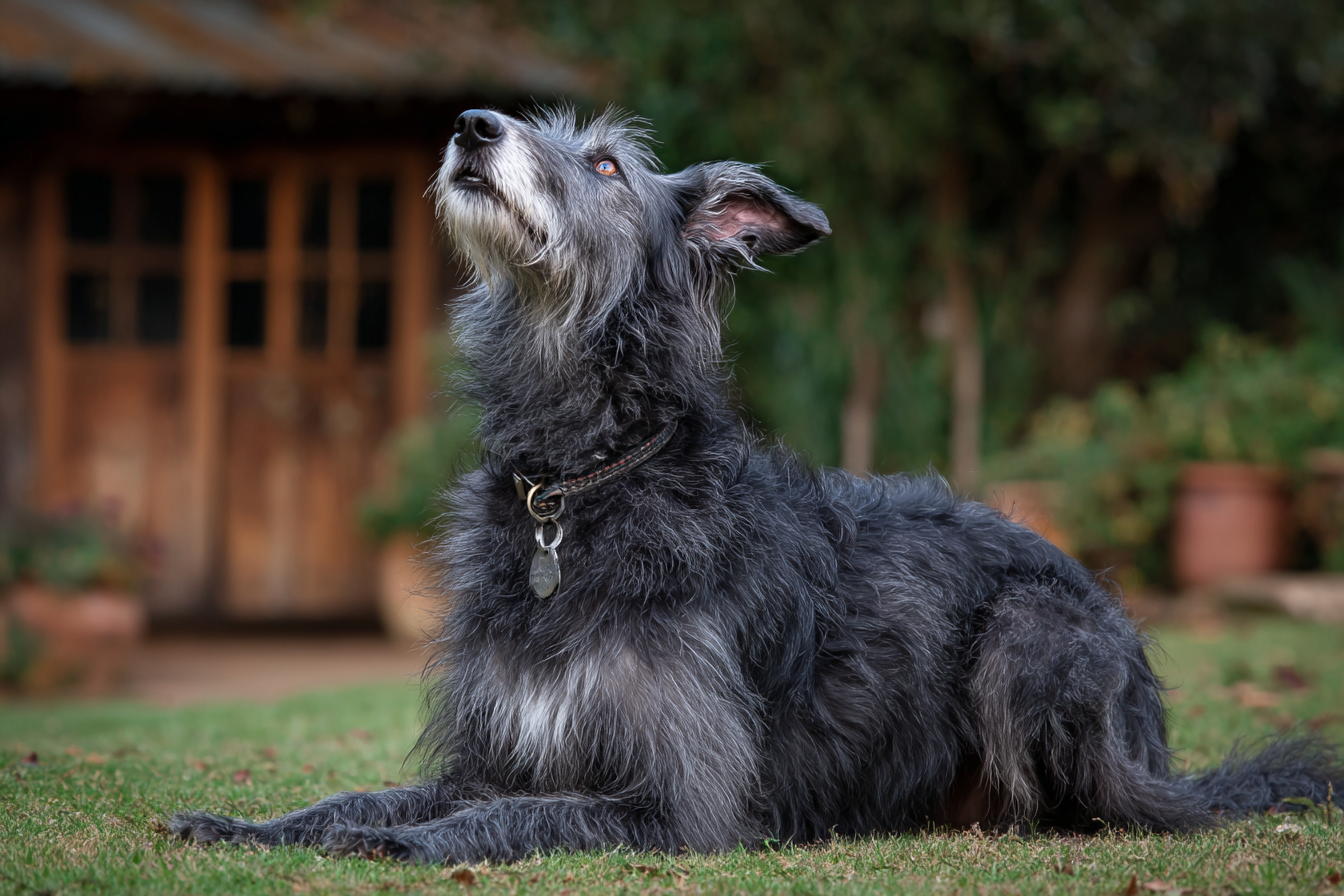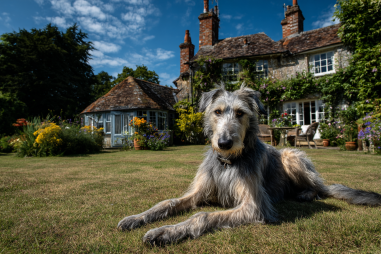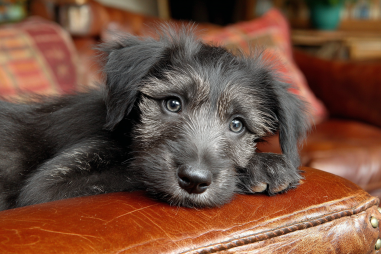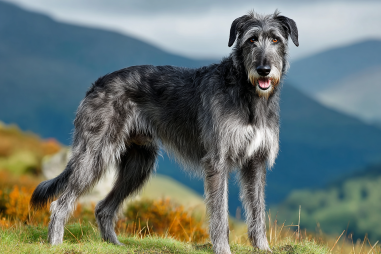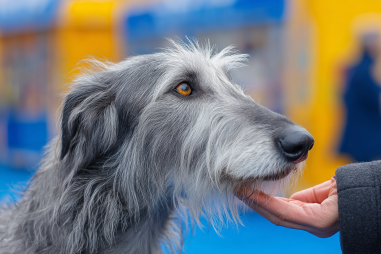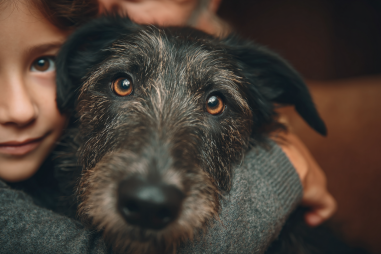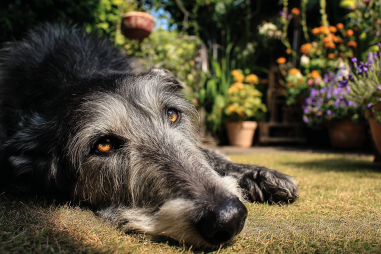Training a Scottish Deerhound can be a truly rewarding experience, especially when you consider the unique blend of gentleness and grace this breed possesses. Known as a gentle giant, Scottish Deerhounds have a calm demeanor but also require consistent guidance to bring out their best behaviors. If you’re new to this breed and looking to establish a strong, positive relationship, it’s important to understand their personality and apply effective training techniques tailored to their needs. Let’s explore some practical tips and strategies to help you raise a well-mannered Scottish Deerhound.
Understanding the Scottish Deerhound Personality
Before diving into the training process, it’s essential to grasp the temperament of the Scottish Deerhound. This breed is gentle, affectionate, and intelligent with a strong hunting heritage. They are known for their calm and quiet nature, though they can also be somewhat independent and stubborn at times. Unlike high-energy breeds, Deerhounds enjoy moderate exercise and thrive in peaceful environments. Their natural prey drive may come into play when outdoors, so training should focus on impulse control and recall.
Overall, Scottish Deerhounds are highly sensitive to harsh treatment, so patience and kindness are crucial. They respond best to training that is gentle, consistent, and positive, making early socialization and foundational obedience key to their development.
Basic Obedience Training Tips
Starting with basic obedience is the cornerstone of any successful training program for a Scottish Deerhound. Focus on commands like “sit,” “stay,” “come,” and “heel.” Keep training sessions short and engaging since Deerhounds can get bored with repetitive drills. Using a calm voice and clear gestures helps reinforce commands.
Consistency is key, so make sure every family member uses the same words and cues for commands. Begin training in a quiet, distraction-free environment and gradually introduce distractions as your dog improves. Reward good behavior immediately to help your Deerhound associate the action with the praise or treat.
It’s also valuable to maintain a relaxed atmosphere during training—this breed can sense frustration and may shut down if the experience is too stressful. Remember, the goal is to build trust and cooperation.
Using Positive Reinforcement
Scottish Deerhounds thrive on positive reinforcement training methods. This means rewarding the behaviors you want to see more often, rather than punishing undesirable actions. Treats, verbal praise, gentle petting, and playtime can serve as effective rewards for your Deerhound.
This approach encourages a bond of trust and motivation, making your dog eager to please and learn. Avoid harsh corrections; instead, redirect unwanted behaviors to more appropriate actions. For example, if your Deerhound jumps up on guests, calmly ask them to sit and reward the sitting behavior instead.
Keep treats small and use high-value rewards that your dog finds particularly motivating, such as small pieces of cooked chicken or special dog treats. As your Deerhound gets better, you can phase out treats and rely more on praise and affection.
Crate and Leash Training Guidance
Crate training can provide your Scottish Deerhound with a safe and comfortable space. Since this breed is generally calm, they often take well to crates when introduced properly. Start by creating a welcoming environment inside the crate with soft bedding and toys. Encourage your dog to enter the crate voluntarily by tossing treats inside and praising them when they go in.
Keep initial crate sessions brief and never use the crate for punishment. Gradually increase the duration as your Deerhound becomes more comfortable. This training helps with housebreaking and provides a secure spot for your dog to relax.
Leash training is equally important due to the Deerhound’s size and hunting instincts. Use a strong yet lightweight leash and a comfortable collar or harness. Start indoors or in a quiet area to practice walking calmly beside you. If your Deerhound pulls, stop walking and wait for them to loosen the leash before moving forward again.
Always keep leash sessions positive and use treats or praise to reward walking nicely. Because Deerhounds can be easily distracted by scents and sights, firm but gentle recall training is vital for off-leash safety in secure areas.
Socialization Strategies
Proper socialization sets the stage for a well-adjusted Scottish Deerhound. Introduce your dog to a variety of people, environments, sounds, and other dogs from an early age. This helps reduce fearfulness or shyness later on. Take advantage of puppy classes, dog-friendly parks, and invites to friend’s homes with calm dogs.
Keep experiences positive and gradual to ensure your Deerhound builds confidence. Avoid overwhelming situations and watch your dog’s body language to know when to take a step back. Socialization also helps curb any potential aggression or excessive timidity, ensuring your dog is comfortable around strangers and other animals.
Addressing Common Behavioral Issues
While Scottish Deerhounds are generally well-mannered, they can occasionally display certain behavioral challenges. For example, their strong prey drive might lead to chasing small animals, so work diligently on recall and impulse control. Another common issue is separation anxiety, as these dogs form close bonds with their families.
To manage separation anxiety, gradually increase the time your Deerhound spends alone and provide interactive toys or safe chew items. Creating a consistent routine and avoiding anxious behavior yourself will also help your dog feel secure when alone.
If your Scottish Deerhound exhibits stubbornness or reluctance during training, remember to stay patient and revisit your training approach. Using exciting rewards and changing up training activities can keep your dog interested. If any behavior problems persist or worsen, consulting a professional trainer or behaviorist familiar with the breed can provide tailored support.
Bringing It All Together for a Happy Dog
Training your Scottish Deerhound requires a thoughtful blend of patience, consistency, and gentle encouragement. Understanding the breed’s unique personality is the first step toward effective training. By focusing on positive reinforcement, basic obedience, crate and leash training, and well-rounded socialization, you lay a strong foundation for good behavior.
With regular, enjoyable training sessions and addressing any behavioral issues early on, you’ll nurture a happy, confident Scottish Deerhound who thrives as a cherished family member. Enjoy this journey with your gentle giant, and you’ll be rewarded with a loyal companion who responds beautifully to your guidance.

